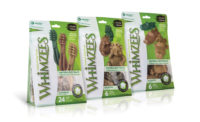Is Your Brand the Real Deal?
Is Your Brand the Real Deal?
by Kate Bertrand Connolly
Brand authenticity emerges as a new marketing imperative.
In a world gone fake, consumers’ desire for the genuine article has acquired new urgency. Reacting to the endless parade of Botox-ed celebrities, drug-enhanced athletes, double-talking CEOs and prevaricating politicians, people are searching for authenticity wherever they can find it, including the retail shelf.
The shift to an experience economy is also fueling their quest. “Experience is becoming the predominant economic offering, and as life becomes a paid-for experience, people increasingly question what’s real and what’s not,” says Joe Pine, cofounder of Strategic Horizons LLP. “Increasingly, they want the real from the genuine, not the fake from the phony.”
From the brand marketer’s standpoint, authenticity represents good business because it differentiates the brand.
It also makes life much simpler. If a company dissembles about anything in this era of information transparency—from executive compensation to waste-management policies—the truth eventually comes out on the Internet. Mopping up the fallout is expensive and time consuming, and the effort can be crippling.
Walking the talk
The companies that keep their brands out of this information-age quagmire understand, deeply, that brand authenticity derives from the brand’s core values. And they behave accordingly. “An authentic brand absolutely knows its values and lives up to them every day in every way,” says Robyn Waters, president of RW Trend LLC. “Whether it’s the product, the marketing method, the social or corporate mission, every brand touch point is authentic and resonates with what the company says it stands for.”
For example, Method Products keeps its brand authentic by hewing to its values of style and substance, with an emphasis on environmentalism. Method markets non-toxic, biodegradable home cleaning and personal care products in stylish, earth-friendly packaging.
Method’s creative director, Nate Pence, defines brand authenticity as “sticking to the core brand beliefs and not hiding behind anything. No matter how big we get or how successful we feel, we still want to act small and be a challenger.”
In the beverage industry, Honest Tea takes a similar approach. The brand’s values are: organic, authentic and healthier. “Everything we make should fall under that umbrella, and I believe it does,” says Seth Goldman, Honest Tea’s president and TeaEO. “We wanted to create a company that would sell something that is what it says it is.”
Doing business that way, with honesty and integrity, naturally creates trust and brand loyalty. Murray’s Chicken, whose core values include a family focus, environmental responsibility and humane growing, exudes authenticity throughout its business, from the family farms that grow its chickens to highly responsive customer service.
“We make sure that what we put out is absolutely trustworthy, that we are what we say we are,” says Steve Gold, vice president of sales and marketing at Murray’s Chicken. “We try to be as transparent as possible. People don’t want walls around their food, they want transparency.”
Perception is reality
The complementary requirement for brand authenticity is to resonate not only with your brand’s values but also with the consumer’s values. In Pine’s opinion, that’s the true test of authenticity. “Brand authenticity is personally determined” by the consumer, he says, “not brand determined.”
“You can have an idea of what you want that authenticity to be, and you can try to render that, but the question is ‘what do people actually perceive?’” Pine says. “What I perceive your brand to be, does that conform to who I perceive myself to be? Does it reach inside me and create a sympathetic vibration that says, ‘Yes, that’s who I am, that’s who I want to be and that’s therefore the brand I want to be associated with?’”
Jones Soda takes this philosophy to the limit, putting consumers in the role of package designer. Consumers submit photographs for use on Jones labels and paperboard multipack carriers, and the company chooses which photos to use. Label art changes once a month.
Taking it a step further, Jones gives consumers the chance to create their own custom-labeled 12-packs through its MyJones service. The buyer supplies a photo and a quote for the back of the label, picks a soda flavor and pays a fee—and Jones delivers the customized product to the consumer’s door.
MyJones is available through the company’s website, which hosts a thriving Jones Soda community through blogs, videos, a Fun & Play Corner, a gallery of submitted photos and other content geared to the brand’s 12- to 24-year-old target demographic.
“The biggest thing that keeps us real is we listen and interact with our customers,” says Seth Godwin, marketing manager at Jones Soda. “We encourage consumer interaction. When you involve your customers, it automatically makes your brand relevant.”
Role of the package
As Jones Soda’s strategy illustrates, packaging plays an important role in conveying brand authenticity.
In addition to communicating what the product is and protecting it from damage during distribution, “the job of the packaging is to translate the brand authenticity into messages, themes and reminiscence,” says Steve McCallion, executive creative director at Ziba Design.
Reminiscence, the idea of using the package form to remind consumers of something they already have an emotional connection to, can subtly communicate core brand values, which is a key part of translating brand authenticity. When the reminiscence resonates with consumers, making them identify with the brand, the perception of authenticity is assured.
Apple leverages reminiscence in its iPod packaging, creating small, elegant boxes that look like watch cases or jewelry boxes. “Apple is about making technology simple and human, so the reminiscence is of a watch case. Even the physical packaging can connect a person emotionally to the core of why the brand exists,” McCallion says. By evoking a watch case, the iPod package also fits consumers’ evolving relationship with personal electronic devices, positioning the MP3 player as a valuable, comforting daily accessory.
For some brands, geographic origin is fundamental to authenticity. Examples include spring water bottled at the source, cheese from Wisconsin, shoes from Italy and pocket knives from Switzerland.
Wineries take location quite seriously, presenting the grapes’ appellation of origin on the bottle’s front label. Text on the back label often describes the land on which the grapes were grown—the terroir—and how that shaped the wine’s taste. Label design and graphics can augment the depiction of place.
Hanna Winery, in Sonoma County, Calif., recently redesigned its wine labels to better convey the unique qualities of its appellations and the winery itself. “Through the label and the package, we convey a sense of who we are and a sense of place,” says Christine Hanna, president of the family-owned winery.
The Hannas “are very much Sonoma,” says David Schuemann, owner of CF Napa Brand Design, which redesigned the Hanna labels. “Sonoma is much slower, a little bit simpler and more authentic” than its high-volume wine producing neighbor, Napa County. “That honesty comes across in the new Hanna label.”
Schuemann says, “Sonoma is about that laid-back lifestyle: the pick-up truck, enjoying the countryside, a little more earthy. Napa is more ‘jump in your Ferrari.’”
The new label also incorporates a hand-hewn quality, with textured paper and deckle edges. The green band on the Hanna Sauvignon Blanc label evokes the green tile of the winery, and the terra cotta-colored capsule suggests the Italian tiles of the winery’s roof. The label’s color band carries copy describing Hanna’s estate vineyards.
The combination of elements evokes not only place, but also the winery’s artisanal focus. “We are hand crafting wines with as much authenticity and integrity as we can. We want to express that in every way possible,” Hanna explains.
Let it shine
To successfully convey brand authenticity, package structures and materials must also be in concert with the company’s values. Materials that provide a clear view of the product demonstrate that the brand has nothing to hide.
Method uses untinted plastic bottles for products such as spray cleansers, dish soap and hand wash, allowing the jewel-tone products to shine through. Minimal printing and labeling support the product’s role as star of the package.
Murray’s Chicken lets consumers get a good look at what they are buying by using a vacuum pouch that provides a 360-degree view of the chicken inside. To provide an even deeper level of transparency, Murray’s puts a date-coded sticker on every package. Consumers can enter the code into the company’s web site to learn where their chicken came from and about the family farmer who raised it.
Honest Tea provides a clear view of its teas through glass and plastic bottles. On labels, the company uses minimal text to keep brand communication to the point. “We try to be as simple and direct as we can,” says Honest Tea’s Goldman. “No gimmicks, no fancy language, no claims, nothing about curing cancer or renewing your sex drive.”
A company’s choice of package materials can testify to its ecological commitment, as well. Method and Murray’s, which both embrace earth-friendliness as a core value, stay true to that with packaging that reduces environmental impact.
Method is transitioning to 100 percent post-consumer recycled PET packaging for its core products (cleaning products and hand soaps) and Murray’s eliminated the foam tray from its packaging for environmental reasons when it switched to pouches. Murray’s pouches are also sealed with a new adhesive that emits significantly fewer byproducts than traditional adhesives.
By necessity, packaging-for-authenticity strategies vary by brand. Many try to communicate the concept by putting words like “real,” “genuine” or “authentic” on the package—a tactic the experts uniformly warn against. The prevalence of this type of language, especially on food and beverage packaging, has conspired to make consumers wary of products that make such claims.
“Go to a grocery store and walk up and down the aisles. Put every single item you find on the shelf that has ‘real’ or ‘authentic’ on the packaging into your cart and see how quickly it fills up,” says Jim Gilmore, co-founder of Strategic Horizons.
Gilmore and Pine performed this exercise, finding plenty of labels touting “real cheese,” “authentic Mexican” flavor, “real fruit” and the like. The pièce de résistance, they said, was the All Purpose Bourbon Chicken Grill ‘N Dip bottle, whose label sported the tag line “Authentic Food Court Flavor.”
The self-proclamation tactic is so common that Gilmore and Pine came up with three Axioms of Authenticity to address it.
“If you are authentic, you don’t have to say you’re authentic. If you say you are authentic, you’d better be authentic. And finally, it’s easier to be authentic if you don’t say you’re authentic,” Gilmore explains. “So get the words off the package and cue authenticity through other means.”
Third-party marks, such as the USDA Organic seal, can be used to gain credibility. Key messages, visual themes, printing and finishing techniques, package shape, texture, materials and the style of typography also can be used in the service of brand authenticity. The right combination will be as unique as the brand itself.
“You are who you are. No one is like you. That’s the beauty of it,” says Ziba Design’s McCallion. “Do what you know, and people will follow.”
WHERE TO GO FOR MORE INFORMATION...
Brand strategy and package design
Ziba Design (503.223.9606; www.ziba.com)
Trend watching
RW Trend LLC, (952.401.3353; www.rwtrend.com)
Thought leadership
Strategic Horizons LLP (330.995.4680; www.authenticitybook.com)
Branding and package design
CF Napa Brand Design (707.265.1891; www.cfnapa.com)
Looking for a reprint of this article?
From high-res PDFs to custom plaques, order your copy today!








